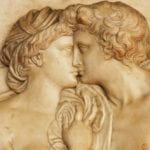 Weird Stuff
Weird Stuff  Weird Stuff
Weird Stuff  Mysteries
Mysteries 10 Tragic Disappearances and Deaths in Joshua Tree National Park
 History
History 10 Ways Childhood Really Sucked in the Old West
 Music
Music 10 Name Origins of Famous Bands from the 1990s
 Religion
Religion 10 Biggest Turnarounds by the Catholic Church
 Weird Stuff
Weird Stuff 10 Unbelievable Times Laws Had Unintended Consequences
 Humans
Humans Ten Historic Women Who Deserve Way More Credit Than They Got
 Movies and TV
Movies and TV 10 Films That Spawned Major Lawsuits
 History
History Ten Times Towns Were Wiped Off the Face of the Earth
 Creepy
Creepy 10 of the Most Disturbingly Haunted Public Houses in the UK
 Weird Stuff
Weird Stuff 10 Niche Subcultures That Are More Popular Than You Might Think
 Mysteries
Mysteries 10 Tragic Disappearances and Deaths in Joshua Tree National Park
 History
History 10 Ways Childhood Really Sucked in the Old West
Who's Behind Listverse?

Jamie Frater
Head Editor
Jamie founded Listverse due to an insatiable desire to share fascinating, obscure, and bizarre facts. He has been a guest speaker on numerous national radio and television stations and is a five time published author.
More About Us Music
Music 10 Name Origins of Famous Bands from the 1990s
 Religion
Religion 10 Biggest Turnarounds by the Catholic Church
 Weird Stuff
Weird Stuff 10 Unbelievable Times Laws Had Unintended Consequences
 Humans
Humans Ten Historic Women Who Deserve Way More Credit Than They Got
 Movies and TV
Movies and TV 10 Films That Spawned Major Lawsuits
 History
History Ten Times Towns Were Wiped Off the Face of the Earth
 Creepy
Creepy 10 of the Most Disturbingly Haunted Public Houses in the UK
10 Strangest Methods Of Government In History
Whether we love it or not, the dominant form of government across the world today is the representative democracy, in which the citizens elect representatives who then use their voice in government on their constituents’ behalf. Representative democracy is found across the world and is broadly similar from country to country. Whether we live in Japan, the UK, or the US, elections and government work in much the same way.
But in the past, many wildly different government types existed side by side for centuries—and some were unimaginably different compared to the way politics work in the West today. Here are ten of the strangest forms of government in history.
10 Carthage
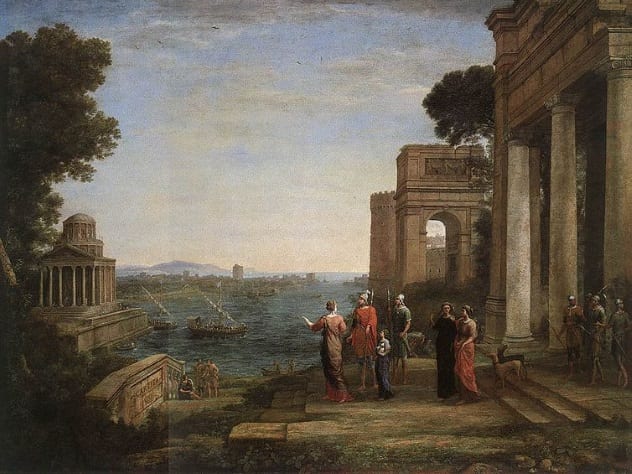
At its height, Carthage was a rival to the early Roman Empire and the dominant maritime power of the ancient world, controlling trade throughout most of the Mediterranean. Carthage was originally settled by Phoenician colonists from modern-day Jordan, but unlike the Phoenicians, the Carthaginians turned their back on monarchy and became a republic in the seventh century BC.[1]
The heads of state were the two suffetes who, much like the consular system in Rome, were elected for a 12-month term and held equal power to each other. Beneath them was a senate of around 200 to 300 people who, when selected, served for life. Unfortunately, the way they were selected is lost to history.
We do know, however, that the senate played an important role in Carthaginian government, with groups of senators being commissioned to manage aspects of the government, such as maintaining religious sites or collecting taxes. The senate also had to be consulted by the suffetes on matters relating to the state. The senate would vote on the issue, and if their decision disagreed with the two suffetes, or if the two suffetes disagreed with each other, the matter would be settled by the people’s assembly.
The people’s assembly met in the market square in Carthage itself, and any male of the city could vote. Since voting was open to any citizen who turned up (only males could be citizens), the size of the assembly would have varied wildly. The people’s assembly also seems to have directly elected the two suffetes, meaning that the people had a large say in how they were governed in ancient Carthage. Unfortunately, though, it meant that people from elsewhere in the Carthaginian Empire had no say over how they were governed; this might have been why, when Rome eventually conquered Carthage, the rest of the empire felt little desire to avenge them.
9 Iceland
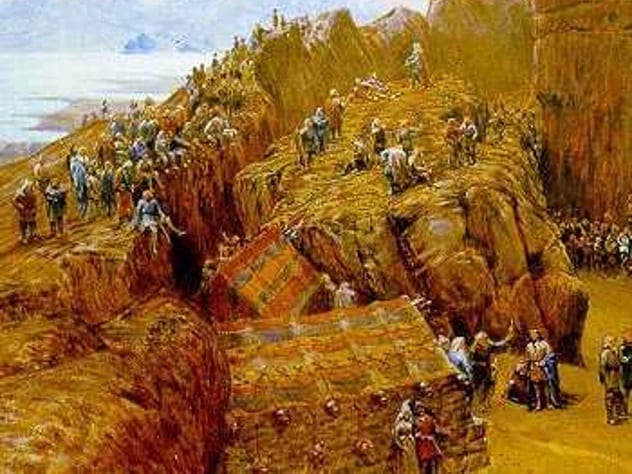
When Iceland was settled by the Vikings around 850, it was too far away from a center of authority for any king to really control it. The result was a medieval Viking republic, governed by the Althing from around 930, making it the oldest continuously functioning parliament in the world.[2]
By 930, the population of Iceland had grown to the point where many people decided they needed a way to organize their own laws and attitudes toward people from outside Norway. From around then, for two weeks in June every year (the best time for traveling), the Althing met at Thingvellir to discuss matters of law. The country was split into 36 chieftaincies, each of which sent a chieftain and two advisers to the Althing. Chieftains—called gothis—were nominated by the people who lived in their chieftaincy, so they were usually the best-connected and most well-liked person in their region.
The Althing was directed by the lawspeaker, a chieftain who was chosen by the other chieftains to serve for three years. The lawspeaker was effectively the living constitution of Iceland, and he and his advisers were expected to know all the laws of Iceland by heart. He would start the Althing by reciting the laws from memory and then would help to facilitate debate between the chieftains by helping them resolve matters through the law or create new laws if they were needed. He held no more power than another chieftain, though, and Iceland had no single head of state.
The Althing was more than a meeting of politicians, though—hundreds of people from across Iceland would travel to the Althing to trade, party, catch up with old friends, and make or break family alliances or agreements, such as arranged marriages or fosterships.
8 Venice
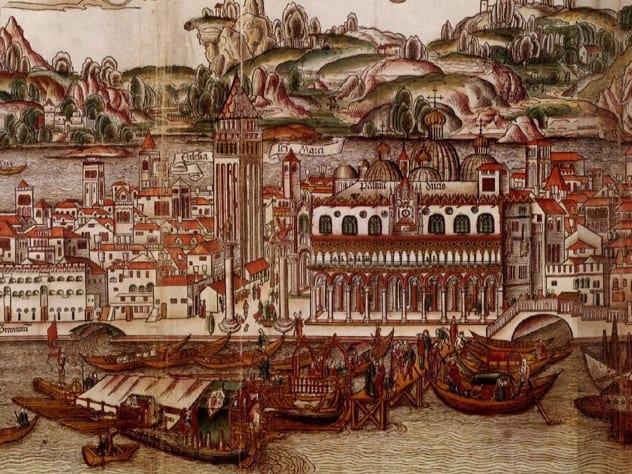
One of the longest-lived republics in European history, the Venetians first elected a doge to lead them in 727 and were governed by elected officials until the city’s conquest in 1797, over 1,000 years later.[3]
The Venetian system was so robust because it had lots of different moving parts, each wielding different amounts of power and having some level of influence over the others—a concept integral to modern democracy. The doge was the head of the system, appointed for life and the de facto ruler of Venice. Despite this, his power was restricted in many ways: The doge was unable to name his successor or even a preferred successor (to prevent certain families from dominating the position), he was banned from leaving Venice, and all his mail was read by an independently elected censor who reported to the public.
The systems that made up the Venetian government changed over time, but the most important were the Collegio, a council of 40 men from the elite families, the senate, which managed finances and diplomacy, the Council of Three, who monitored the other branches, and the grand chancellor, who ran the city’s bureaucracy. All these officials were chosen by and from the members of the Great Council, which consisted of 1,000 people who were all chosen from a list of 180 great families—making Venice an oligarchy, not a true democracy. To complicate matters further, some people were allowed to be members of several government bodies at the same time.
Nothing sums up the crazy Venetian system better than the way they elected the doge : First, 30 members of the Great Council were chosen at random and then reduced at random to nine. These nine chose 40 more Great Council members, who were reduced at random to 12. These 12 chose 25, who were reduced to nine. These nine then elected 45 members, who were reduced to 11, and these 11 chose the 41 who elected the doge by majority vote. The final number was originally 40 but was increased to 41 after a tie in 1229.
Venice’s masterminded system was ultimately toppled by the introduction of the Council of Ten around 1310. Originally designed to monitor the other bodies and prevent them from taking too much power, it seized more and more power for itself over time and even had its own secret police force. By 1600, Venice had effectively become a dictatorship.
7 Florence

At the end of the 1200s, many Northern Italian cities rejected the rule of wealthy nobles and instead turned to the rule of the popolo, and Florence was no different.[4] In 1293, the city enacted the Ordinances of Justice, which blocked the 152 noble families of the city from holding political office. From then on, the people would rule.
Of course, it wasn’t quite so simple. Though government was no longer restricted to the nobility, to be part of the popolo, a citizen had to be a member of one of the seven major guilds of the city (the judges, cloth traders, moneylenders, silk traders, doctors, wool traders, and fur traders); the members of the five minor guilds (the butchers, shoemakers, smiths, masons, and secondhand traders) also had a lesser status in the popolo.
Together, they elected the Signoria, who served a term of just two months and were the highest authority in the city. The Signoria was led by the gonfalionere, a member of the Signoria who was chosen at random. The Signoria met every day in the Palazzo della Signoria (today known as the Palazzo Vecchio), where they discussed government matters and decided on legislation to introduce, which would then have to be passed by the Twelve Good Men.
The two-month term limit led to an acute interest in politics and much factional infighting, mainly because power was always within grasp for any aspiring politician. For most of the republic’s history, politics was dominated by antagonism (and sometimes outright civil wars) between the Guelphs, who supported the pope, and the Ghibellines, who supported the German emperor. The gonfalionere’s term limit was extended to life in 1498, after which Florence was dominated by the rule of the Medici family, who eventually made themselves the hereditary rulers of the Duchy of Florence in 1533, ending the republican government.
6 Republic Of Novgorod
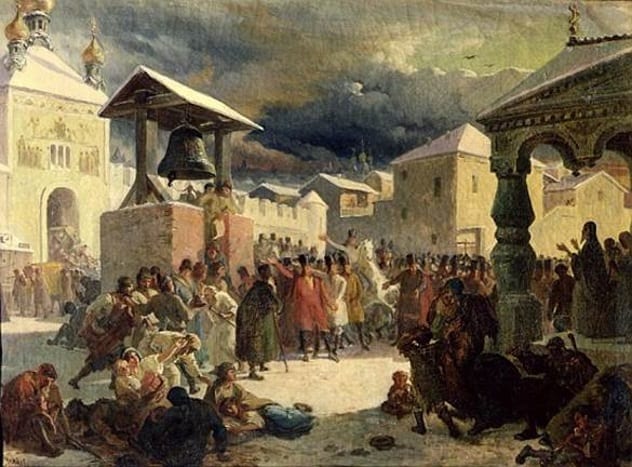
While Novgorod was always ruled by a prince, the veche held the most power.[5] The veche was effectively made up of every male citizen of the city and made government decisions through mass meetings in which people voted on the issues of the day. The veche could be convened by any free man of the city by ringing the veche bell in the town square, which was the official signal for any interested citizens to congregate in the square and participate in democracy.
The prince remained the head of state, but he was severely restricted by a constitution introduced by the veche : The prince was banned from engaging in commerce, for example, and could not hold land or have a personal army of more than 50 people. Other than the prince, the veche elected the posadnik (mayor) and tysyatsky (militia commander), who were in charge of day-to-day government.
As Novgorod grew in size and influence, the government became more advanced: By 1291, the state was managed by the council of lords, which was made up of the archbishop, a representative of the prince, the posadniks and tysyatsky of Novgorod, and the posadniks of other regions in the republic outside the city. Novgorod was split into five veches, which each elected their own posadnik. The territories the republic owned outside the city were also split into five regions, each with their own posadnik.
The republic’s end ultimately came from outside, from the city of Muscovy (aka Moscow), their ancient rival. Muscovy’s strength increased over the 14th and 15th centuries until, in 1478, the Muscovite prince and his army conquered Novgorod and removed the veche bell, officially ending the republic.
5 Iroquois Confederacy
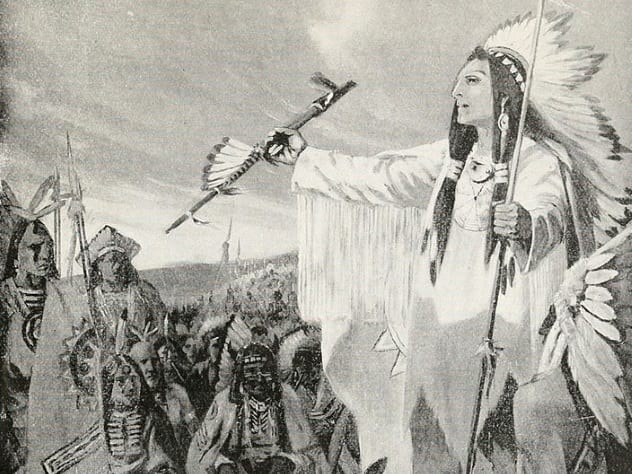
The Iroquois Confederacy was a union of five—later six—Native American tribes who lived in the New York state area before the arrival of the first European colonists.[6] Originally enemies, they were united by the semilegendary figure Hiawatha, who encouraged the tribes to work together and not to attack each other, instead helping each other to tackle their enemies.
The arrangement soon became a basis for government. Because Iroquois society was matriarchal, the individual clans and families were led by clan mothers. Each clan mother chose a chief to send to the Iroquois council, which was made up of 50 chiefs. The decisions of the council had to be unanimous, so no action would be taken until all 50 chiefs could be persuaded to support it.
As time went on, the Iroquois agreement became cemented in the Great Law of Peace, which was divided into 117 separate articles governing everything from religious and state ceremonies which helped to cement a feeling of unity between the six tribes, to protecting individual liberties and the concept of separate powers. Despite originally being recorded on strings of wampum shells because the Iroquois had no written alphabet, it was a highly complex and involved constitution. Ideas from it influenced the development of the United States Constitution—particularly Benjamin Franklin’s Albany Plan. In 1748, the Iroquois chiefs offered to teach their democratic principles to the British colonists.
The confederacy ended in 1784 in a brief but devastating war with the United States. Two of the tribes decided to relocate to British Canada for protection, one moved to a reservation in Wisconsin, and three were moved to reservations in New York, where they remain today.
4 Sparta
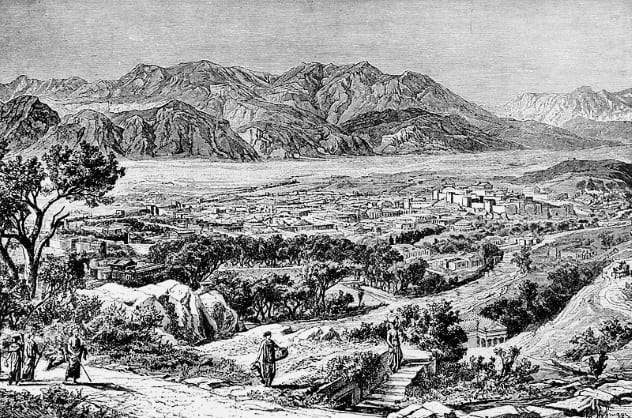
In the past, it wasn’t unusual for a country to be run by a single king or queen. What was far more uncommon, however, was a country ruled by two different kings from entirely different families at the same time—but this was the system the Spartans used.[7]
The two kings were also priests of Zeus, making them especially important in the religious structure of the city-state. In times of war, one of the kings would lead the army to battle, and he would have almost unlimited power over the soldiers. When in the city itself, though, the kings had surprisingly little influence over state affairs: that was reserved for the Gerousia, the council of elders.
The Gerousia was made up of 28 elders and the two kings. Each elder had to be at least 60 years old. They were elected by the people in a voice vote—the candidate who received the loudest vote was chosen, after which he held the position for life. The Gerousia mainly existed to advise the kings on matters of government and to settle disputes between other Spartans—the council was also Sparta’s high court.
Proposed law changes were voted on by the people’s assembly, which met once a month and of which every male Spartan citizen over 30 was a member. Unlike in other Greek democracies, however, the assembly had very little power: It was not allowed to debate issues, only vote yes or no on them, and the Gerousia had the power to overturn any vote they deemed to be “crooked.” The assembly was originally overseen by the kings, but in later years, it was managed by the ephors, five people who were elected for a single one-year term (and who were banned from standing again after) by the assembly.
The ephors were originally introduced to oversee government practice but, much like the Council of Ten in Venice, soon seized power for themselves. Their role allowed them to scrutinize and punish any in the government who they saw as acting illegally, which frequently led to the ephors abusing their position. By the end of the Spartan age, the ephors controlled the activities of the kings and had their own secret police force.
3 Babylon
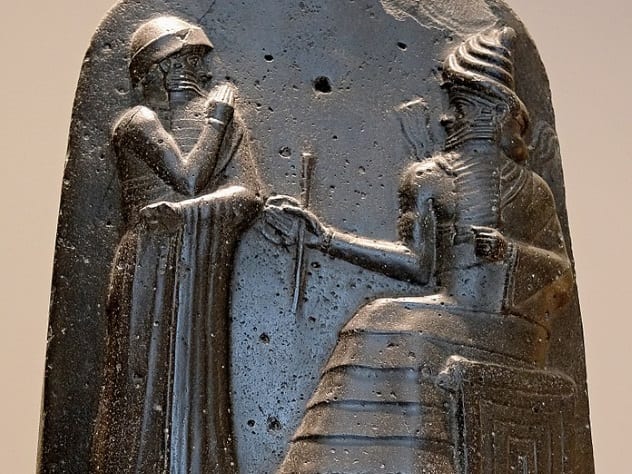
Long before the ancient Greeks, the Babylonian Empire stretched across most of Mesopotamia, uniting the region under a single government that, at its height, could easily have opposed the might of ancient Egypt.[8]
The strength of the Babylonians lay in their authoritarian, centralized system of government that prioritized efficiency above all things. At the center of their system was the king, who was considered a god on Earth and who, if his mind was made up, no one could contradict. The king enforced his rule with an organized bureaucratic system of taxation, military conscription, census records, and records of goods created, traded, and stored. This was maintained by a large elite civil service who kept things moving and who owed their power to the king.
Perhaps most famously, though, the Babylonians created a well-known set of laws. The laws, which are often known as the Code of Hammurabi (named after the king who introduced them) were written so that the “strong should not harm the weak” and to “further the well-being of mankind,” according to Hammurabi himself. In all, it consisted of around 280 separate laws, most of which set out the responsibilities of people who entered contracts—for example, holding a builder to account for a house that falls down or removing a judge who changed his decision after it had been written down.
2 Holy Roman Empire
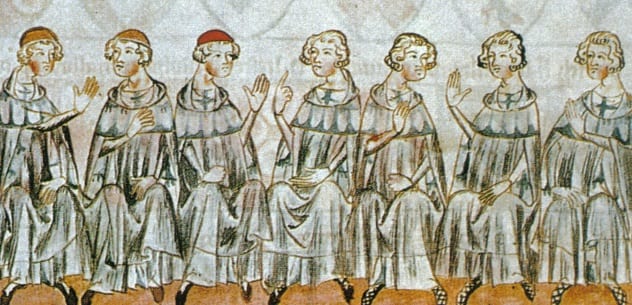
In all of human history, few governments have matched the Holy Roman Empire for sheer complexity.[9] To fully explain the government of medieval Germany would take an entire list by itself, but at its heart, the Holy Roman Empire was governed by two separate bodies: the emperor and the Reichstag.
The emperor ruled for life, but unlike many other medieval monarchies, the position was not hereditary. Instead, on the emperor’s death, it was the duty of the empire’s electors to select a new emperor. For most of the empire’s history, the electors were the archbishops of Mainz, Trier, and Cologne, the king of Bohemia, the margrave of Brandenburg, the elector of Saxony, and the count of the Rhine. The emperor had to be at least 18 years old, be of noble blood, and own land in the empire. This meant that, while it was rare, monarchs of other states could be put forward as legitimate candidates for emperor. Otherwise, the emperor was similar to a ceremonial head of state today in many ways: He represented Germany abroad but had little actual diplomatic agency, he was the highest judge in the empire but could only exercise his power in the courts, he appointed officials and had his own household staff, and he could withhold his consent to new laws, preventing them from being passed.
The Reichstag was the council of the empire, made up of representatives from all its regions. The Reichstag served at the emperor’s pleasure until 1653, after which a new member of the Reichstag had to be approved by the College of Princes and the College of Electors (effectively, the other members and the electors).
The main body of the Reichstag was the College of Princes, which was made up of members called states of the empire. In the early days, a state of the empire was attached to a particular portion of land—so the owner of that land would go to the Reichstag as its representative and use its vote. If there were several owners of that land (which became increasingly common as landowners divided their lands between their sons on their deaths), they had to share that vote in the Reichstag. This meant that if someone held different portions of land around the empire, they could end up sharing several votes on the Reichstag with different people, without outright owning a single vote. On top of this, the emperor could make a particular individual into a state, giving him a vote even if he held no land—this privilege was removed in 1653. A state of the empire also had several rights, such as forming its own council and making its own treaties with countries outside the empire. In effect, each state of the empire was its own country, which sent a single vote but (sometimes) multiple representatives to the Reichstag, depending on who owned the land that made up that state. In addition, some states were specifically defined as having only a single vote, which only one individual could use, or shared votes, which could be shared between the state’s landholders.
To make matters worse, there were also units bigger and smaller than the states: The electors had their own college in the Reichstag, where they had much more influence than their measly number would suggest (there were over 1,000 states of the empire), and there were the imperial cities, independent city-states which were grouped into benches that were led by different cities at different times. The city with the most prominence was usually the city in which the Reichstag was meeting that day. (The empire had no permanently defined capital.) The rights of different states, electors, and cities also varied depending on whether or not they were held by a member of the clergy or a member of the nobility.
Thankfully, the whole sorry affair was put to an end by Napoleon in 1806 when he created the Confederation of the Rhine following the Battle of Austerlitz.
1 Inca Empire

At its height, the Inca Empire numbered over ten million people.[10] Despite its great population, however, the number of ethnic Inca was a lot smaller. The empire united many different Andean peoples with wildly different cultures and languages in a single unit, ruled by a single man—their god-king, who was the son of their all-powerful sun god. The state was highly organized and hierarchical, with the king at the top, closely followed by his dead ancestors, who were mummified and preserved (and even consulted for advice in elaborate rituals at times of crisis). Immediately beneath the king was his council of ten families closely related to the royal family, who advised the king and helped in the running of the empire. Beneath them was another council of ten noble Inca families, which was followed by another council of ten non-Inca families from other parts of the empire.
Beneath them, the empire was split into 80 regions, each led by a governor, whose job it was to administrate his region and ensure that the enormous amount of data the empire collected from its people was properly recorded, kept, and transported back to the capital. To ensure that the governors remained loyal to the empire, their heirs were taken to the Inca capital at Cuzco to be held under house arrest, where the king and his allies could keep an eye on them.
But the most unusual thing about the Inca Empire was that, despite its large population and extremely organized bureaucracy, it had no system of currency or written language. The government collected a census every year that recorded births, deaths, marriages, individual workers’ skills and statuses, and the amount of goods in each region, among other things. It was used to help the central government decide on where to build new state projects, where food needed to be distributed, where to send laborers (who were sometimes traded as a commodity), and so on.
They did all this, even lacking a written language and despite the many cultural and linguistic barriers across their empire, by using quipu, which involved tying knots on strings to represent values. These strings allowed the Inca to develop a rather advanced credit/debit system not unlike modern Western accounting, built on the base-ten system that we use for mathematics across the world today. The quipu knots were used to record everything from the numbers of different goods in stockpiles to the distances traversed by enemy armies. Because it didn’t rely on knowledge of a written language to work, it could be used across the empire, without people having to learn each others’ languages.
Read more odd facts about ancient historical government on 10 Strange Ways Things Were Done In The First Democracy and Top 10 Little-Known Facts About Ancient Greek Democracy.


